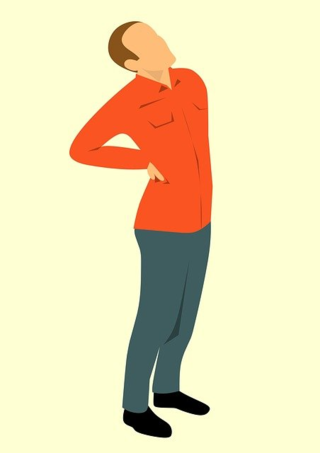Chronic Pain
A New Approach to Train the Brain to Treat Chronic Pain
Changing fear-inducing beliefs about pain can yield significant enduring relief.
Posted January 13, 2022 Reviewed by Vanessa Lancaster
Key points
- More than 20 percent of the U.S. population lives with chronic pain—defined as pain that lasts longer than three months.
- Chronic pain can be analogous to a car alarm that gets activated and becomes stuck on “on” when there is no real threat to the vehicle.
- Pain reprocessing therapy (PRT) is a recent treatment approach based on the premise that the brain can generate pain without injury.
- Learning and practicing ways to think differently about chronic pain and changing one’s beliefs about it can significantly reduce one's pain.

More than 20 percent of the U.S. population lives with chronic pain—defined as pain that lasts longer than three months—with an estimated annual cost of more than $600 billion.1 2 The most common form of chronic pain is chronic back pain. In approximately 85 percent of cases, no physical cause for chronic back pain—such as disk damage or arthritis—can be identified.3 4
Such medically unexplained pain is thought to be caused by changes that take place in the brain and nervous system after an injury or other condition that persist even after damaged tissue heals. These brain changes serve an important purpose in the immediate aftermath of actual tissue damage—providing warning signals to guard the area and limit movement to give the body time and opportunity to recover. Frequently, chronic pain appears to occur when those signals continue after an injury has healed.
In fact, research demonstrates that as pain becomes chronic it is increasingly associated with activity in the affective and motivational systems linked to anxiety, fear, (perceived threat) and avoidance that serves a protective function and less closely tied to nociceptive pain—pain caused by damage to body tissue.5 6 Chronic pain can be analogous to a car alarm that gets activated and becomes stuck on “on” when there is no real threat to the vehicle.
Pain reprocessing therapy (PRT) is a recent treatment approach based on the premise that the brain can generate pain in the absence of injury or after an injury has healed, and that the brain can effectively unlearn this “leftover” pain. PRT teaches people to reduce the threat value of their continuing pain signals, perceiving them as less threatening and fear-inducing. The goals of PRT are to educate patients about the role of the brain in generating chronic pain; to help them learn how to reappraise their pain as they engage in physical movements/activities they have been fearful about, and to develop emotional regulation skills to help them better manage emotions that may increase the perception of pain.
The first empirical study of PRT was conducted by researchers at the University of Colorado and funded by the National Institute on Drug Abuse, National Institute of Mental Health, and National Center for Advancing Translational Sciences. Participants included 151 men and women with chronic back pain for at least six months at an intensity of at least four on a scale of 0 to 10 for which no physical cause could be found. The study results were published in JAMA Psychiatry (2021).
In this randomized clinical trial, participants were assigned to one of three treatments: PRT, placebo, or their usual form of care. Participants randomized to PRT participated in one telehealth session with a physician and eight psychological treatment sessions over four weeks. PRT treatment focused on helping patients reconceptualize their pain as due to brain activity rather than tissue injury using a combination of cognitive, somatic, and exposure-based techniques. Participants randomized to placebo received a subcutaneous saline injection in the back; participants randomized to usual care continued their routine, ongoing care.
Participants rated their pain before and four weeks after starting treatment, as well as undergoing fMRI scans to assess brain activity before and after treatment. Researchers conducted follow-up assessment with study participants one year later.
Thirty-three of 50 participants (66 percent) that received four weeks of pain reprocessing therapy were pain-free or nearly pain-free at posttreatment, compared with 10 out of 51 participants (20 percent) that received placebo, and 5 out of 50 participants (10 percent) that received usual care—with gains largely maintained one year later.
Treatment effects on pain correlated with reduced beliefs that pain indicates tissue damage, and fMRI scans indicated that for those who received PRT the activity in several brain regions associated with pain processing had quieted significantly compared with the other two study groups.7
This study focused specifically on PRT for chronic back pain, so future research is needed to determine if this treatment will yield similar results for other types of chronic pain.
Inasmuch as different brain regions, including those associated with reward and fear, activate more during episodes of chronic pain than acute pain, for those with chronic pain certain neural networks appear to be sensitized to overreact to even mild pain-associated stimuli. Consequently, approaches such as PRT that facilitate reappraising the causes and threat value of pain can help reduce or even eliminate it.
This is in no way to suggest that chronic pain is “all in your head” or somehow less real. Personally, I’ve been afflicted with chronic back pain for over two decades.
However, by learning and practicing ways to think differently about chronic pain and changing people's beliefs about it—reconceptualizing it (as much as medically appropriate) as essentially safe rather than dangerous, they can shift the brain and nervous system networks that reinforce the pain and significantly turn down, if not turn it off altogether.
Copyright 2022 Dan Mager, MSW
References
[1] Dahlhamer J, Lucas J, Zelaya C, et al. Prevalence of chronic pain and high-impact chronic pain among adults—United States, 2016. MMWR Morb Mortal Wkly Rep. 2018;67(36):1001-1006. doi:10.15585/mmwr.mm6736a2
[2] Institute of Medicine. Relieving Pain in America: A Blueprint for Transforming Prevention, Care, Education, and Research. National Academies Press; 2011. doi:10.17226/13172
[3] Hartvigsen J, Hancock MJ, Kongsted A, et al; Lancet Low Back Pain Series Working Group. What low back pain is and why we need to pay attention. Lancet. 2018;391(10137):2356-2367. doi:10.1016/S0140-6736(18)30480-X
[4] Maher C, Underwood M, Buchbinder R. Non-specific low back pain. Lancet. 2017;389(10070):736-747. doi:10.1016/S0140-6736(16)30970-9
[5] Kuner R, Flor H. Structural plasticity and reorganisation in chronic pain. Nat Rev Neurosci. 2016;18(1):20-30. doi:10.1038/nrn.2016.162
[6] Hashmi JA, Baliki MN, Huang L, et al. Shape shifting pain: chronification of back pain shifts brain representation from nociceptive to emotional circuits. Brain. 2013;136(Pt 9):2751-2768. doi:10.1093/brain/awt211
[7] Yoni K. Ashar et al. Effect of Pain Reprocessing Therapy vs Placebo and Usual Care for Patients With Chronic Back Pain: A Randomized Clinical Trial. JAMA Psychiatry Original Investigation, September 29, 2021 DOI: 10.1001/jamapsychiatry.2021.2669 https://jamanetwork.com/journals/jamapsychiatry/fullarticle/2784694




